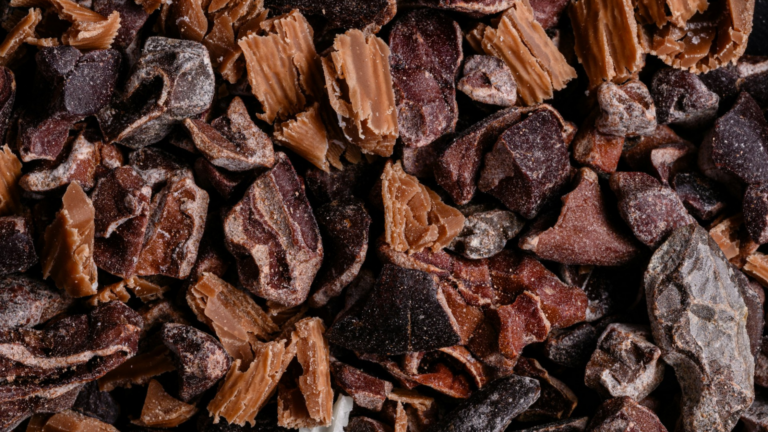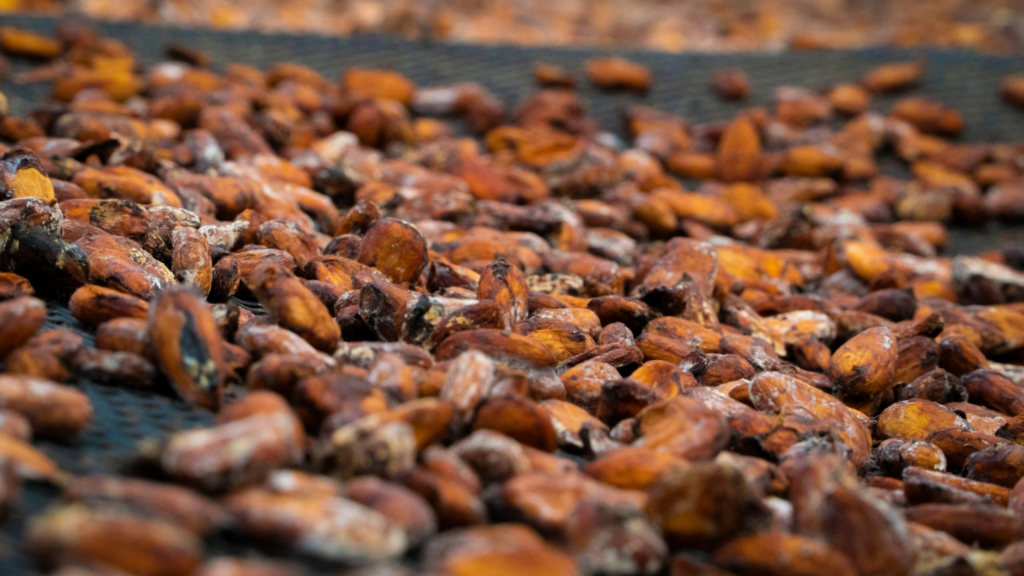
Why There’s No Need to Worry About Lead and Cadmium in Chocolate (But it’s Important to Be Aware)
If you’ve been working with chocolate for a while now, you’ve probably heard the rumblings about heavy metals in chocolate, particularly lead and cadmium.
Back in 2023, an independent non-profit in the US called Consumer Reports shared an article in which their scientists tested 28 consumer brands of chocolate and found elevated levels of toxic heavy metals in 23 of them. In 5 of the 28 bars, levels of both lead and cadmium were above the adult’s recommended daily dose, according to California’s state laws, which are some of the strictest in the US.
Since then, Lindt has come under fire from legal action, and news articles have appeared around the world raising the alarm regarding heavy metals in chocolate. But it’s not as worrying as it initially sounds; let us explain…
What are Heavy Metals?
Heavy metals are naturally occurring elements found in the soil, which can be absorbed by plants and appear in our food. Some of these are named toxic heavy metals, including lead and cadmium, but also mercury and arsenic, as they may be harmful when exposed to high levels. Exposure can be through water and food, air pollution or work environments.
How Do Toxic Heavy Metals Get into Chocolate?
There are a few ways in which heavy metals get into food, such as:
- Contaminated soil
- Pesticides
- Industrial processes
- Environmental pollutants, such as industrial emissions and vehicle exhaust fumes
In the case of chocolate, cadmium is present in the soil as a result of volcanic activity, forest fires and the weathering of rocks. Cadmium is absorbed from the soil by the cacao tree and finds its way into the pods and beans, which are then processed and turned into chocolate. The levels vary depending on geographical location, soil acidity and the variety of cocoa being grown—for example, higher levels are found in South American cocoa compared to African cocoa.
Lead, on the other hand, is a post-harvest byproduct. Once the beans are harvested and left to dry in the sun, often on the roadside, the beans can become contaminated with dust and dirt containing lead from machinery and vehicle exhaust fumes. Levels of lead in chocolate are much lower than cadmium and are usually nothing to be concerned about.
How Much Toxic Heavy Metal is Safe to Consume?
Different countries (and even different states in the US) have varying guidance on safe levels of toxic heavy metals in food. The European Commission produced a handy document about cadmium in chocolate, and in 2015 they passed Commission Regulation (EC) 2023/915, which relates to the level of cadmium permissible in foodstuffs. This legislation came into effect 1 January 2019 for cocoa producers and processors, and restricts the amount of cadmium found in cocoa products to a maximum of:
- 0.10mg/kg for chocolate with less than 30% cocoa solids
- 0.30mg/kg for chocolates with 30-50% cocoa solids
- 0.80mg/kg for chocolates with over 50% cocoa solids
- 0.60mg/kg for cocoa powder
These levels are in line with the international standard set by the Codex Alimentarius Commission.
Regulation (EC) No. 2021/1317 focuses on establishing maximum levels of lead in foodstuffs, but there is no maximum specific to cocoa as it’s found at much lower levels and has low bioavailability (the amount absorbed by the body during digestion is minimal).

Are Lead and Cadmium in Other Food?
Cocoa products aren’t the only foodstuffs to contain lead and cadmium; carrots, sweet potatoes, spinach and even tap water all contain some lead and/or cadmium. In fact, according to the European Food Safety Authority (EFSA), chocolate products only contribute 4.3% to the average individual’s intake of cadmium.
Food that we consume in higher quantities has the greatest impact on our dietary exposure to cadmium, rather than foods with higher levels of cadmium like chocolate. For example, grains and grain products were the largest contributor at 26.9%, followed by vegetables at 16% and starchy roots and tubers at 13.2%.
Should You be Worried About Toxic Heavy Metals in Your Chocolate?
In small amounts, the risk of these toxic elements harming a healthy adult is very low, and the benefits from other nutrients in foods like grains, vegetables and dark chocolate far outweigh the risk of any potential harm.
According to food scientists, it’s not clear how much of the heavy metals present in chocolate are actually absorbed by the body.
Ultimately, it’s important to be aware of which foods may contain elements such as cadmium and lead and make educated decisions about your own personal consumption. Chocolate, especially good quality couverture, is a luxury and tends to be eaten in smaller amounts than other contaminated foodstuffs, so the risk is very low for healthy adults.
So, Why is Lindt Being Sued?
In the wake of the Consumer Reports findings, customers from six states in the US have taken legal action against Lindt & Sprüngli, Lindt’s parent company. The lawsuit relates to the high levels of lead and cadmium found in Lindt’s chocolate products. According to the New York Post, consumers felt “frustrated” that they had paid significantly higher prices based on Lindt’s promises of “expertly crafted” chocolate made from “the finest ingredients” and had believed that meant Lindt’s products were safe.
In an attempt to get the class action lawsuit dismissed, Lindt’s lawyers admitted some of their marketing claims are “puffery”, exaggerating the quality of their ingredients and expertise of their chocolatiers. Despite this defence, the court decided to uphold the lawsuit, and Lindt has since claimed the lawyer’s explanation was simply a “technical” legal response and continues to disagree with the allegations made in the lawsuit.
Our Brands on Heavy Metals in Chocolate
We asked our chocolate suppliers about lead and cadmium in their products and have so far received statements from Callebaut, Valrhona, Cargill (Veliche Gourmet and Vanova), Favorich, Luker Chocolate and Smet (maker of chocolate décor). All of these brands produce chocolate that falls within the legal levels for heavy metals in the UK and Europe, and many are working hard to further reduce the amount of lead and cadmium that comes into contact with their cocoa going forward.
If you’d like to read your brand of choice’s statement in full, get in touch.
*Disclaimer: The information in this article has been given in good faith; Keylink Ltd and our suppliers do not accept liability for any errors or omissions.
Sources
- European Food Safety Authority. Cadmium dietary exposure in the European population. 18 January 2012. Found online at: https://www.efsa.europa.eu/en/efsajournal/pub/2551
- European Commission. Cadmium in Chocolate. March 2019. Found online at: https://food.ec.europa.eu/system/files/2019-03/cs_contaminants_catalogue_cadmium_chocolate_en.pdf
- Consumer Reports. Lead and Cadmium Could be in Your Dark Chocolate. 25 October 2023. Found online at: https://www.consumerreports.org/health/food-safety/lead-and-cadmium-in-dark-chocolate-a8480295550/
- The Chocolate Professor. Hazards of Heavy Metals in Chocolate. 21 February 2024. Found online at: https://www.thechocolateprofessor.com/blog/chocolate-heavy-metals-hazards
- CBI. What requirements must cocoa meet to be allowed on the European market? 10 July 2024. Found online at: https://www.cbi.eu/market-information/cocoa/buyer-requirements
- New York Post. Lindt makes bombshell admission about its ‘expertly crafted’ chocolate amid lawsuit. 14 November 2024. Found online at: https://nypost.com/2024/11/14/lifestyle/lindt-makes-bombshell-admission-about-its-expertly-crafted-chocolate-amid-lawsuit/